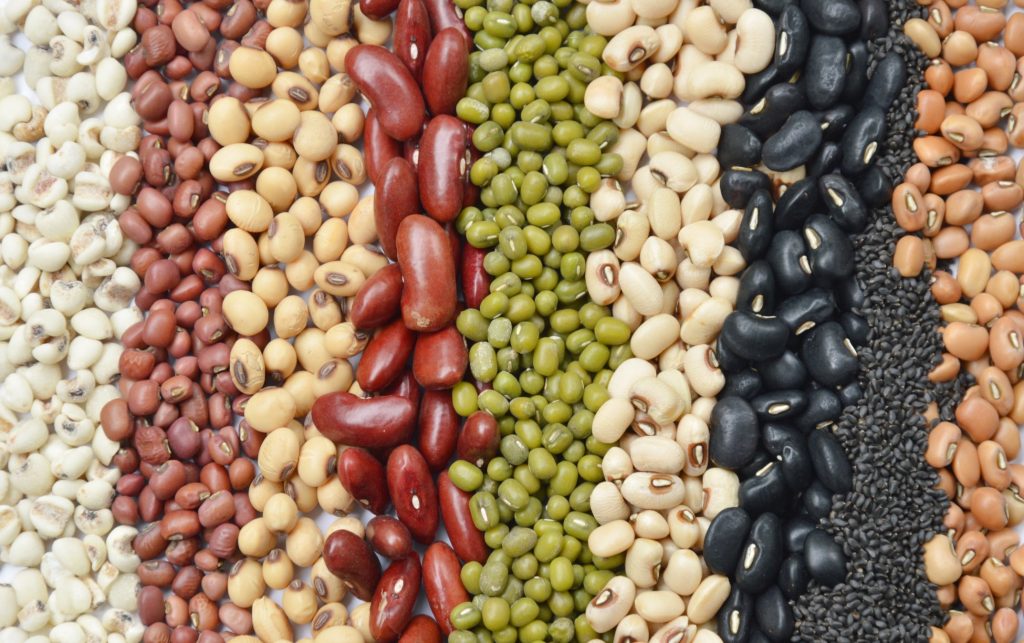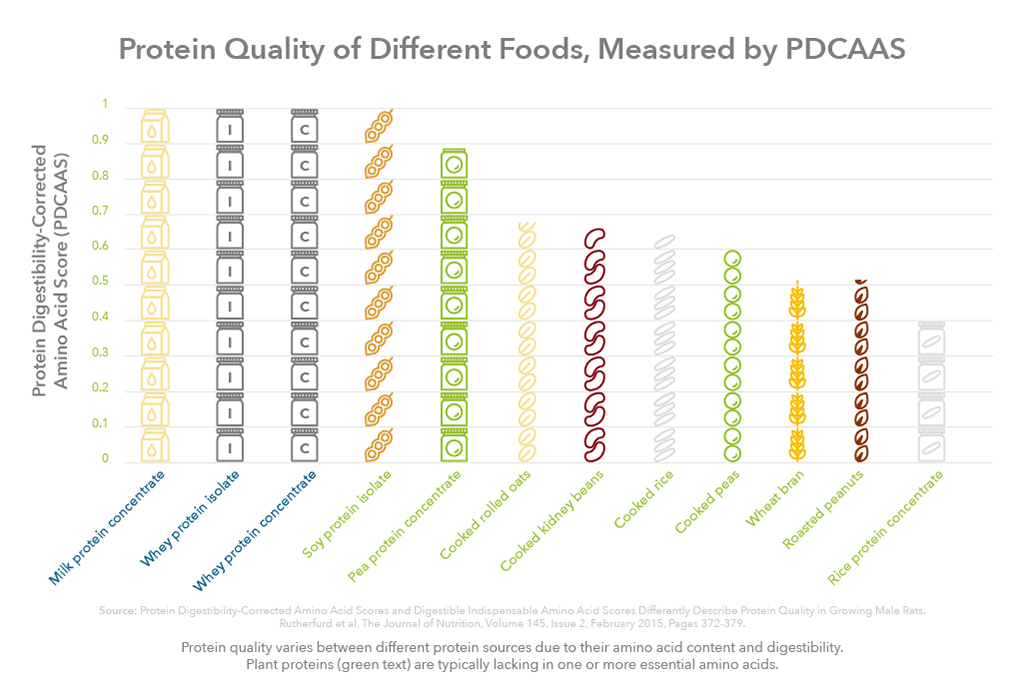During the early phases of the plant-based trend, many products received a free pass on nutrient content or ingredient labels. The novelty of being ‘plant-based’ was enough, and products during this time focused on creative new ways to deliver alternatives to animal-derived foods, riding the coattails of the strong health halo consumers associate with plant-based foods. However, nutrition is becoming more and more critical to address when formulating plant-based foods.
Now that the trend is becoming a mainstay in the global food economy, these foods and beverages are no longer getting a free pass on nutrition. In the United States, for example, health and nutrition are the top two reasons consumers purchase plant-based cheese, yogurt, or ice cream and health is ranked third for plant-based meat alternatives (Winning with Plant-based, Kerry Proprietary Research 2020).
Studies are also beginning to show that people who replace animal-based foods with plant-based alternatives can end up decreasing their intake of important nutrients while increasing their intake of nutrients linked to disease like saturated fat, sodium, and sugar. These studies emphasize the importance of addressing nutrients beyond protein for this trend.
As a result, the nutrition attributes of plant-based foods and beverages are under more scrutiny worldwide. We talked to our nutrition, food science, and marketing experts across the globe to understand the challenges in plant-based nutrition and keys to success for the future.
Common nutrition challenges when formulating plant-based foods and beverages
Choosing the right protein source

There are a lot of considerations that go into choosing the protein source for a plant-based product from the multitude of options available. Supply chain, consumer perception, taste, flexibility in formulation, sustainability, and nutrition can all be deciding factors in whether to choose soy, pea, sunflower, hemp, chickpea, rice, and so on.
For nutrition, protein quantity and quality matter are the main things to consider. Most plant proteins are missing specific amino acids the human body needs, and this will differ depending on source. Plants are generally low in methionine (e.g. beans, nuts and seeds), lysine (e.g. grains like wheat), or tryptophan (e.g. corn), and higher in non-essential amino acids arginine, glycine, alanine and serine.
This, along with digestibility, mean many plant proteins have different protein quality ‘scores’. You can see some examples below, but for more information check out our article “Nutrition Benefits of Plant Protein Taking Root with Consumers”.

Lengthy ingredient declarations
When making plant-based alternatives to dairy or meat, it’s often necessary to use many ingredients to build the same taste, texture, and functionality that you’d see in a dairy-based milk or a beef patty. This makes sense in some respects, because something like cow’s milk is made up of many different proteins, fats, carbohydrates, and other compounds when it’s produced by a cow.
A product must have the right taste and texture to be appealing and taste good, but the challenge is that long ingredient labels can be overwhelming or not preferred by consumers. The average plant-based cheese has 11 ingredients while traditional cheese has only four (Winning with Plant-based, Kerry Proprietary Research 2020), for example.
Salt and sugar content
Salt (in plant-based meat alternatives) and sugar (in plant-based dairy alternatives or beverages) can be a major nutrition concern for two key reasons. The first is that it takes away from the consumer appeal of a plant-based product. If health and nutrition are the top reasons why a consumer would choose a plant-based yogurt, then it should deliver on that expectation of healthy and not be abnormally high in sugar. The second is the impact adding sugar or salt can have on product labels, especially in parts of the world where front-of-pack labeling systems call out high sugar or salt levels on a product.

Many countries in Latin America have warnings on foods that contain high levels of salt or sugar. The Nutri-Score system continues to spread across Europe, among other calorie-reduction initiatives, so high salt and sugar levels can give foods unfavorable front-of-pack ratings in those countries, as well.
Sugar or salt are often used to build taste in plant-based products that have challenges compared to their animal-based counterparts, but it is important to remember the reason why consumers choose plant-based foods in the first place and to make sure foods are delivering on the expectation of health.
“The ultimate goal is to have a product which delivers an equal or better nutritional profile to their meat equivalent. Currently, many products are delivering a “less healthy” product due to the addition of high levels of fat and salt in order to meet the taste and mouthfeel requirements.” – Nicky Dear, Business Development Director for Plant Protein, Kerry Europe & Russia
Dairy and meat are sources of important nutrients that plant-based alternatives may lack
Dairy and meat contribute important nutrients to the diet, including vitamin D, calcium, iron, zinc, protein, and potassium. Many meat or dairy alternatives do not consider the nutrient content of the foods they are replacing, which can have an impact on people making changes to their diet to include more plant-based options.

For example, dairy is the #1 contributor of vitamin D and calcium in the diet of people in the United States and in Canada, and a major contributor of many nutrients to the diets of those living in Europe.. These are key nutrients for health and are already under-consumed in the US. If plant-based dairy alternatives do not deliver similar amounts of calcium or vitamin D, then a plant-based alternative could actually be less healthy for a consumer than the animal-based version. As a result, it is not delivering on the reason why the consumer chose the plant-based alternative in the first place.
A key challenge for formulating plant-based foods and beverages, then, is to think about the nutrition of the food the alternative is replacing.
“To deliver on consumer expectations, ‘plant-based’ should offer the same nutritional quality of animal-based foods in terms of nutrients like protein, vitamins, and minerals.” – Denise Wilkes, Nutrition Scientist, Kerry Latin America
Opportunities for improving nutrition of when formulating plant-based foods and beverages
Offer nutrients beyond protein
“A major opportunity is pairing the nutrition of plants, like fiber, vitamins, and minerals you’d see in vegetables, grains, and fruit, with improved plant-based protein – taking the best of both and combining them to make a truly healthy product” – Genny Tan, MSc, Business Development Manager, Kerry Asia Pacific
For meat and dairy alternatives, consider the nutrition of the food that’s being replaced. Dairy is a key source of vitamin D, potassium, vitamin A, protein, iodine, and calcium in the diet of many people across the globe, so plant-based dairy alternatives should strive to match those nutrient contributions. Iron, zinc, and B vitamins are important to consider for plant-based meat alternatives, alongside protein.
There are many nutrients that are harder to get enough of when consuming more plant-based foods. The article “Nutrition for Plant-based Diets: Managing Nutrient Intake and Bioavailability” is a great resource for which nutrients to consider for plant-based foods.
Another option is to offer a new nutrition benefit, rather than match that of the animal-based food. For example, a plant-based milk alternative made from oat might offer a serving of whole grains and some fiber. Most people in developed countries do not consume enough whole grains or fiber, so the product can still deliver on the expectation of ‘healthy’ without having to be identical in nutrition to milk from cows.
Keep ingredient declarations short by using multi-functional ingredients that offer nutrition and help with taste and texture.

Some fibers offer nutrition benefits but can also bind ingredients together in a bar or thicken a beverage. By being diligent about the selection of each ingredient, you can maximize the effectiveness of each one to keep the ingredient label short when formulating plant-based foods.
Innovation by suppliers in this area is ongoing and will be key for the future of the plant-based trend. Artificial intelligence is being used more often to screen plant sources for unique properties, such as mimicking the behavior of dairy-based proteins to make plant-based chees more authentic. Finding unique ways to process whole plant ingredients, like oat flour, to improve their functionality in foods and beverages while still delivering nutrition can make plant-based offerings more appealing to both consumers and product developers.
Keep sodium and sugar low to avoid front-of-pack warnings and improve health
Sugar and salt are important for overcoming some of the taste challenges in plant-based foods, but using too much can prevent foods from delivering on consumer expectations for plant-based foods to be healthy.
Unfortunately, there is no 1-1 replacement for sodium chloride in foods. “Challenges and Opportunities in Sodium Reduction” is a great resource to learn more about balancing sodium content.
Many options exist to reduce sugar. Taste modulators, low-calorie sweeteners, or intense flavors are all possibilities. Our webinar recording “Sugar Reduction: Formulating for Success” is a place to hear nutrition and formulation experts talk about the challenges and solutions for sugar reduction.

 Nathan Pratt, PhD, RD is a nutrition scientist passionate about finding ways to make science easily used and understood to improve health. During his time working with the food and beverage industry he has worked with companies globally to bridge the gap between consumer insights and nutrition science and to better leverage nutrition in their strategies and product development.
Nathan Pratt, PhD, RD is a nutrition scientist passionate about finding ways to make science easily used and understood to improve health. During his time working with the food and beverage industry he has worked with companies globally to bridge the gap between consumer insights and nutrition science and to better leverage nutrition in their strategies and product development. 